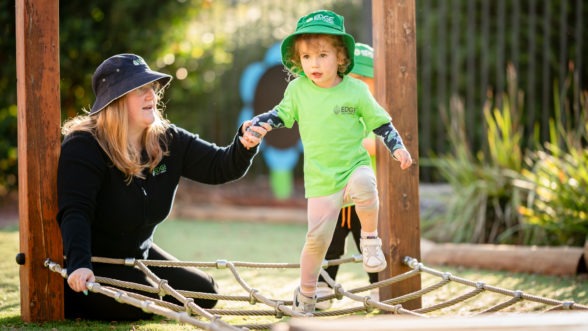
Useful tools, Wellbeing
Useful tools
13 May, 2025

In our experience, we’ve found toilet training is most successful when kids are ready. Part of being ready is about age and development, but there’s plenty parents and caregivers can do to help prepare kids too. Here’s our step-by-step guide on how to toilet-train toddlers.
Children are individuals and will be ready to start toilet training at different times, although as a general guide, most children are ready to start potty training when they’re aged between 18-24 months old. There are signs to look for that indicate your child may be ready, such as:
Toilet training typically takes three to six months, but can vary depending on the child. Starting before a child is ready can extend the process.
It’s helpful to familiarise your child with the concept of using the toilet so they understand how it all works and what they need to do. Talk to them about using the toilet and let them flush it. Demonstrate how to sit on the toilet, use toilet paper and wash their hands afterwards. It can be helpful for children to start with a potty, or there are toilet seat adapters you can attach to your toilet. You may also consider training or pull-up pants before transitioning to underpants.
When children are first learning to recognise when they need to use the toilet, it’s helpful to offer them regular toilet breaks to help avoid accidents. Encourage children to let you know when they need to use the toilet and praise them for doing so. Positive reinforcement is a powerful tool. You may like to reward them with a sticker or stamp when they use the toilet successfully.
It is important children can use the bathroom during the day before starting night-time toilet seat training. Staying dry throughout the night can take longer to learn, particularly for heavy sleepers. It’s not unusual for children to need nappies overnight even when they start school.
As with daytime toilet training, look for signs your child is ready, such as having a dry nappy overnight or only wetting it as they wake. Trying to use the toilet themselves overnight or calling out for help during the night are other signals they may be ready.
Talk to your child about using the toilet during the night and make sure they are physically able to do so safely. This includes ensuring they can get out of bed and pull their pyjamas down by themselves. Consider how to light the way from your child’s bed to the bathroom by using night lights or lamps or leaving a light switched on. You may prefer your child wakes you so you can help them. Using a waterproof mattress protector on their bed is highly recommended.
Empower your child to succeed at toilet training by helping them to take the lead. Dress them in clothing that is easy for them to pull down themselves, such as elastic waists rather than buttons and belts. Offer support and encouragement when they use the toilet independently or tell you they need to go. Provide plenty of reassurance and praise.
There are going to be accidents. Prepare yourself. Setbacks are normal too. It’s important adults remain calm and encouraging. Avoid scolding or punishing children over accidents. Carry/pack spare underwear and a change of clothes for your child. If your child is feeling pressured to succeed, pause toilet training for a week and give them time to relax before trying again.
Our educators are experts in toilet training – we do it every day! And kids love using our child-sized loos. Please be sure to let your child’s educator know when your child is toilet training and we’ll continue the training while they’re in our care.